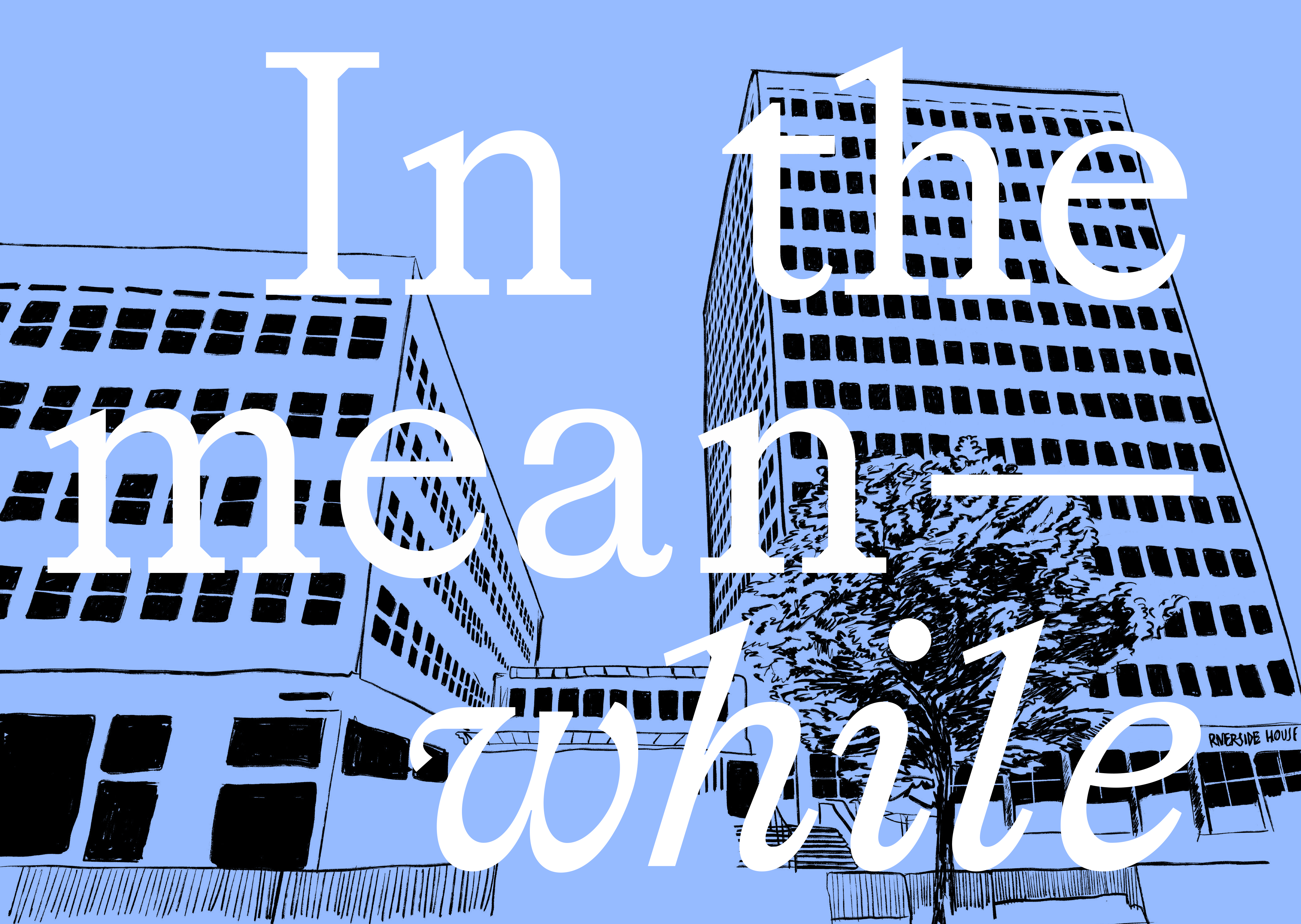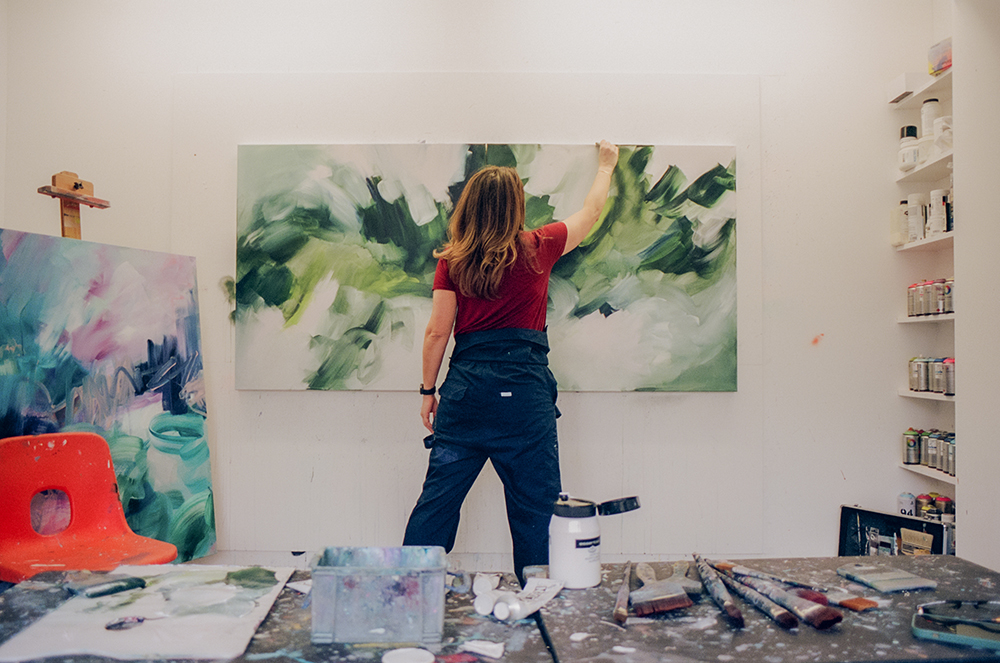
8 minute read
In the meanwhile
by artiqannual
Meanwhile placemaking is a transformative way of approaching empty spaces that is changing our perception of vacant buildings and is laying the foundation for a new industry.
Cities are constantly in flux; they are everevolving and never cease to develop. Yet, there are many buildings, sometimes entire areas, that remain vacant for extended periods of time. Sometimes, this results from the decline of a whole industry, forcing businesses to shut down and people to move. In cities, it is more commonly due to speculation about future increases in value or delays and disputes around planning. Many are not suitable to be lived in, but they can function as temporary offices or creative workspaces.
Advertisement
The idea of utilising empty spaces before permanent developing plans are set in motion or during the time between tenancies is nothing new. During the 1970s, New York's Soho became paradigmatic for cities around the world by proving the benefits of allowing artists to live and work in old warehouses and decaying tenement districts, slowly transforming them into valuable real estate, the most celebrated (and notorious) example being the Chelsea Hotel.
Half a decade later, meanwhile use of empty spaces has become a lot more common, especially in large metropolitan areas where the increasing property prices are showing no signs of slowing down.
However, one of the differences in 2022 compared to the 1970s is the ever-growing emphasis on ESG priorities. The link between consumer values and brand purpose has grown significantly in the last decade, and global events such as the Covid-19 Pandemic and concerns about climate change have only sped this up (1). It is no longer enough to deliver good products or services; businesses should ideally prove their dedication to specific ethical criteria; they need to do good while making money.
NDT Broadgate is a brilliant example from recent years of what can be accomplished when vibrant and energetic artistic organisations and landowners work together. The first of its kind, NDT Broadgate was a project in a partnership between New Diorama Theatre and British Land made possible through investments from Arts Council England and Jerwood Arts. British Land is a leading UK property company with sustainability and social value embedded in every aspect of its operations. New Diorama Theatre, one of the most influential studio theatres in the UK, saw its industry shattered by the pandemic. Once the world slowly started opening up again, practitioners within theatre went from focusing on surviving to recovering. Launched in August 2021, NDT Broadgate was a 20,000 sq ft rehearsal complex offering free space to independent artists and organisations in the City of London. Based at British Land's Broadgate campus, it was an extension of the site's existing social programme focusing on access to opportunities and commitment to sustainability. During the one-year temporary occupancy, 108,924 h of free space was gifted out, and 9-months into the residence, 656 companies and groups had produced 213 new shows (2). Tenants and funding were selected via randomised lottery, eliminating individual biases, nepotism, and levelling barriers to access.

Before vacating the space in July 2022, New Diorama Theatre and British Land published 'Notes from an Impossible Space: NDT Broadgate and the Future of Artist Support': a blueprint of this project, encouraging similar partnerships to be replicated globally. Another success story is that of SET Studios, a community organisation that financially and creatively supports grassroots artistic production, offering affordable studios to over 500 artists. In March 2021, SET Studios opened a 140,000 sq ft site in Woolwich in Riverside House - the former Greenwich Council and HMRC offices. One of the largest meanwhile spaces in London, it is one of the most affordable for artists to rent, with the 250 studios priced from £0.9 per sq ft PCM (3). The authority sold the building in 2017.
The first development plan was filed in 2018 but went nowhere, with a second application to develop submitted in 2020. SET moved into the building shortly after for an initial guaranteed 18-month period, thanks to partnering with LOWE, a London-based guardian housing and vacant property management specialist. Simon Hall, director of the building owner MDPL, said how "[our] priority for the duration of the project elaboration period is to maximise social value for the community" and "on a wider scale, as one of the largest studio spaces in London, we can see changes to the social landscape contributing to improving the image of Woolwich. As it is in our best business interests, we see our cooperation with LOWE as the perfect example of a win-win solution."
Johanna De Verdier is an artist and a tenant at Riverside House. As a recent graduate, having a studio after university is far from a guarantee: "being at SET has made a massive difference for me. I have been able to explore what my studio practice is outside of the institutional context."

A snapshot from Johanna de Verdier's studio in SET Woolwich.
When speaking about how many artists are opting to leave London due to the high living costs, she insists the cost-saving aspect outweighs the temporary nature of the contract: "I've been at SET for two years now, and although it is a meanwhile contract that could technically end with short notice, what it has given me far outweighs the potential stress of a sudden move. But all benefits aside, I wish more actions were taken to lower the price of working spaces for creatives in London; organisations like SET are great; they create space that enables early-career artists to function in this city. However, it's sprung from a rather desperate situation. The possibility of being able to afford a studio space depends on how quickly buildings are being developed into housing you most likely will never be able to afford yourself; it can make you feel a bit cynical. I'd love to see more initiatives that value giving artists a sense of safety and security."
Explaining the perks of meanwhile use to occupants is an easy pitch: the lease might be temporary, but you will be paying under average commercial rates, which for many emerging creative practitioners, small businesses and not-for-profit organisations is a dealbreaker to whether they can take a leap of faith to realise their dreams.
Arguing the case of meanwhile use to landowners and property developers should be equally easy to assert as it also holds significant benefits for them. There are great financial overhead costs associated with empty sites, especially in urban areas, which the property owner is likely to bear. Insurers often consider a vacant property to represent a greater risk than one occupied; it is more prone to vandalism and squatters, requiring additional security to be arranged and paid for. In some areas, councils have the right to charge up to 50% extra on the standard rate of council tax if your property has been empty and unfurnished for two years or more (4).
Beyond financial benefits, showing interest and understanding of local needs can foster a better relationship between developers and the local community. Thinking and acting on ESG proactively, rather than reactive, is key to future-proofing your business and increasing its long-term value. Proving your company's values-based commitments through practical and genuine interventions that benefit the communities important to your stakeholders will lead to their increased engagement. It can also distinguish your business in the changing talent landscape, where attracting and retaining skilled employees is becoming increasingly more difficult.
Nonetheless, allowing for meanwhile use of empty spaces is not the antidote to bad development, nor should it be limited to very short-term interventions. If done carelessly, meanwhile placemaking can be useful in the short term to those operating them but fail to connect in any way to the longterm development of the places where they pop up. However, if done intentionally, it can have immense potential to create both social and economic value (5). Providing social infrastructure can help creativity to flourish, and focusing on ways to localise and share the benefits more widely within the community can facilitate more inclusive economic growth. Enhancing the attractiveness of an area (which is not exclusively related to appearance, but the increasing importance placed on community and wellbeing) will eventually lead to rising land value, thus benefiting future developments.
There are benefits and detriments of both short and long-term interventions and investments; adapting a meanwhile approach allows for the perks of both. It is here for a good time, just not a very long time.
Lovisa Ranta, Senior Marketing Executive










